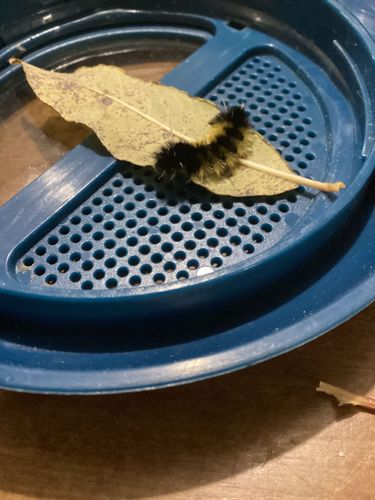Woolly Bear Caterpillar
Scientific Name: Pyrrharctia isabella (or other species of Arctiinae family)
Order & Family: Lepidoptera (moths and butterflies), Erebidae (tiger moths and allies)
Size: 2-5 cm (0.8-2 inches) in length as a caterpillar

Natural Habitat
Widely distributed across temperate regions, found in gardens, fields, woodlands, and urban areas. Often seen crossing roads in autumn.
Diet & Feeding
Polyphagous; feeds on a variety of low-growing plants, including dandelions, asters, clover, plantain, and grasses. They are not typically destructive to cultivated crops.
Behavior Patterns
Known for their distinctive behavior of curling into a tight ball when disturbed, a defensive strategy. They are solitary and typically active during the day. As caterpillars, they overwinter by finding sheltered spots under logs, rocks, or leaf litter and can survive being frozen solid. In spring, they thaw and continue feeding before pupating into an adult Isabella Tiger Moth. The adult moths are nocturnal.
Risks & Benefits
Generally harmless to humans; their bristles rarely cause irritation. There is a common folklore that the width of their black bands predicts the severity of the coming winter, though this is not scientifically supported. They are part of the natural food chain and contribute to ecosystem biodiversity. The adult moths are pollinators, though not significant ones.
Identified on: 10/12/2025